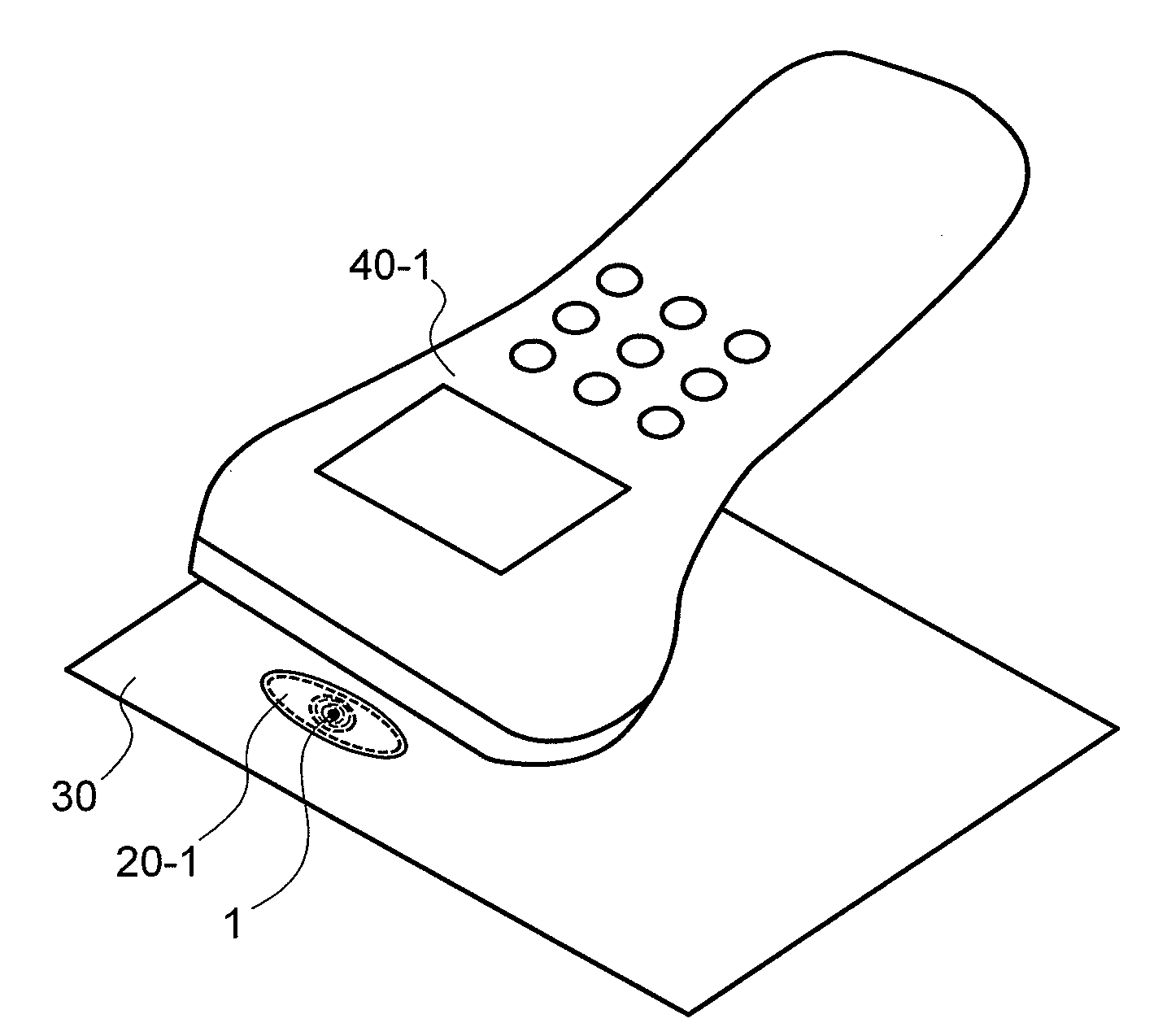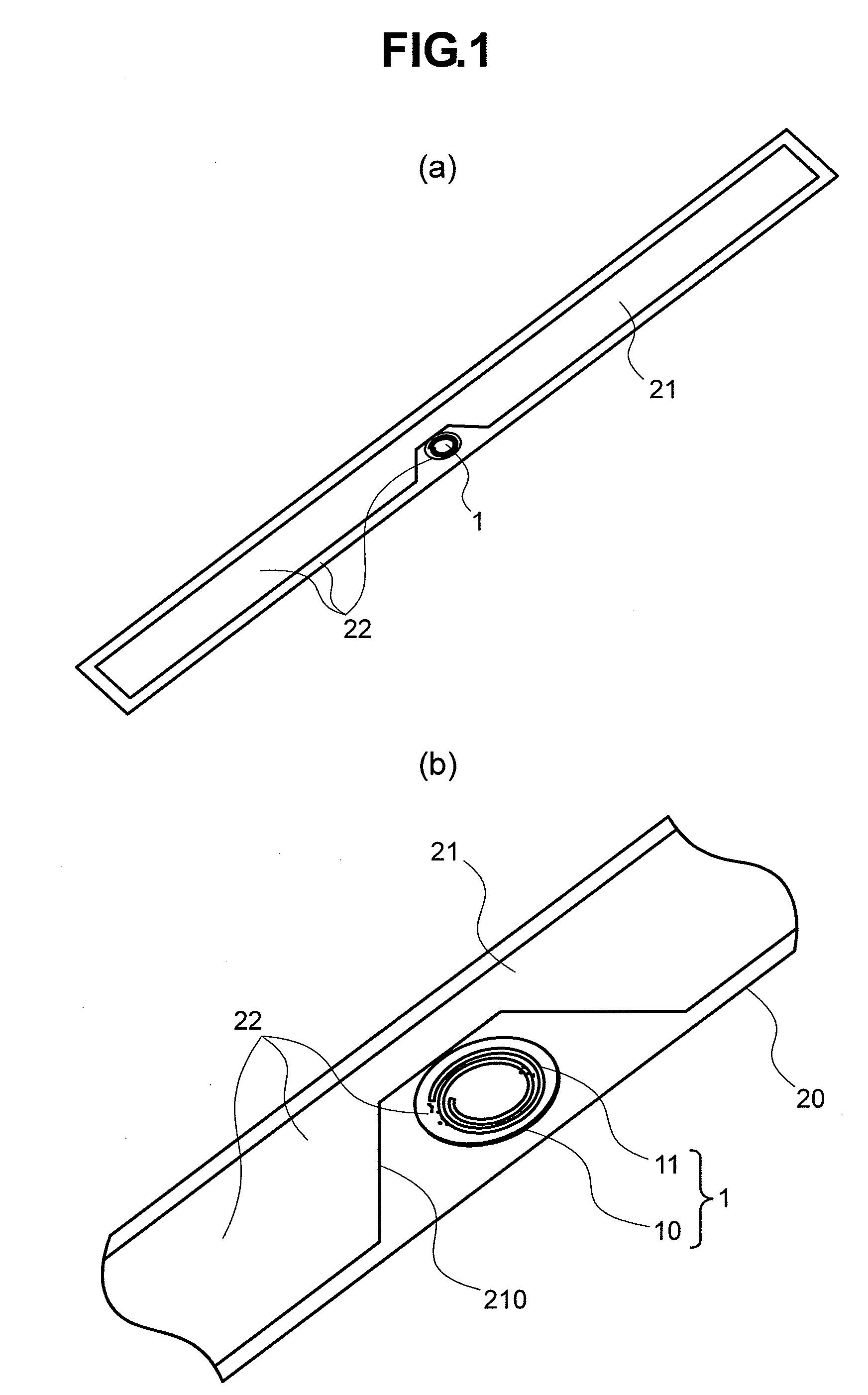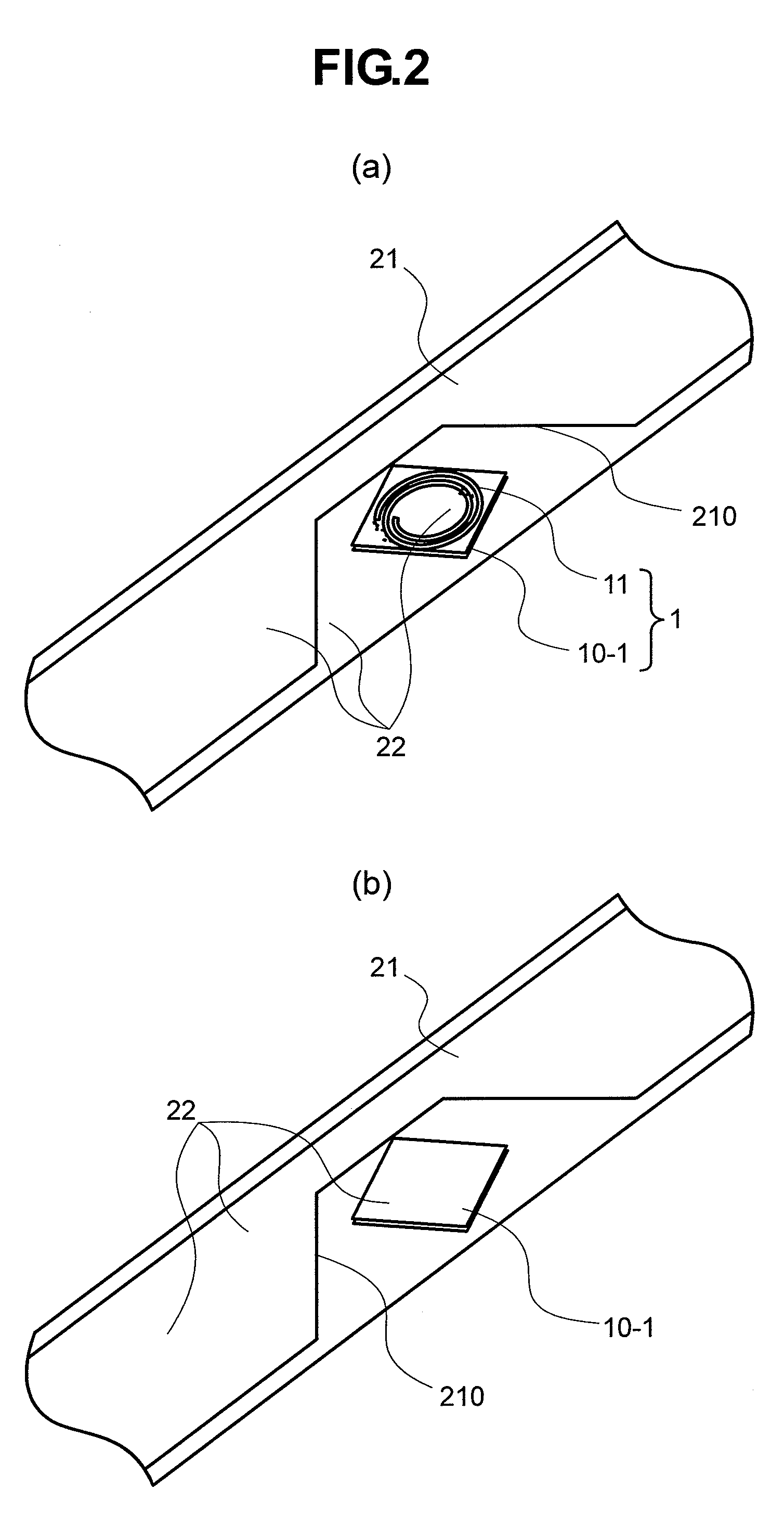RFID tag
a technology of rfid tags and ic chips, which is applied in the direction of burglar alarms, mechanical actuation of burglar alarms, and the removal of hand-held items, etc., can solve the problems of reducing the production volume of rfid tags, affecting the mutual flow of current, and increasing the cost of rfid tags, so as to reduce the manufacturing cost of rfid tags, eliminate the need for contact between antennas and ic chips, and reduce the cost of r
- Summary
- Abstract
- Description
- Claims
- Application Information
AI Technical Summary
Benefits of technology
Problems solved by technology
Method used
Image
Examples
first embodiment
[0042]FIGS. 1A and 1B are typical external perspective views of an RF-ID circuit apparatus (or RFID tag) to which the invention is applied. FIG. 1A shows the entire RF-ID circuit apparatus, and FIG. 1B is a detail diagram of the surrounding of a circuit chip (such as an IC chip) 1. The circuit chip 1 has a whorl antenna coil 11 on a circuit surface of a disk-shaped silicon chip 10, which is a circuit substrate. The circuit chip 1 uses the antenna coil 11 to receive radio waves and power from the outside and return signal radio waves to the outside for communication with the outside (such as a reader, writer and the composite circuit, not shown). The antenna coil 11 implementing the information exchange between the circuit chip 1 and the external circuit may be coated with gold plating, for example, as an upper wire on the circuit surface side of the silicon chip 10 (that is, the base material of the circuit chip 1). A base film 20 having an antenna 21 of aluminum foil, for example, ...
second embodiment
[0050]FIGS. 2A and 2B show a similar antenna structure to that of the first embodiment described with reference to FIGS. 1A and 1B except that the circuit chip 1 includes a square-shaped circuit substrate 10-1. According to this embodiment, the antenna coil 11 and the antenna 21 are only placed closely, but connection by the mutual contact is not required. Therefore, the limitations on the mounting position, angle and front or back of the circuit chip 1 on the main surface of the base film 20 can be alleviated. For example, as shown in FIG. 2B, even when the circuit substrate 10-1 is mounted on the main surface of the base film 20 upside down, no problems occur like the first embodiment. Since the circuit chip 1 can be cut out by cutting a semiconductor base material such as a silicon wafer straight with a dicing blade for use in a general semiconductor post-process, the square-shaped circuit substrate 10-1 (or the circuit chip 1) can be obtained at low costs and from one silicon wa...
third embodiment
[0051]The RFID tag according to this embodiment, which will be described with reference to FIGS. 3A and 3B, is characterized by an antenna 21-1 which is formed in a straight line on the main surface of the base film 20. The dipole antenna 21-1 does not have a so-called notch at the center (or near the longitudinal middle point), unlike the antenna 21 according to the first and second embodiment. Also in this embodiment, the circuit chip 1 is only required to place near the center of the antenna 21-1, and the precision for aligning the chip can be more alleviated than that in the antenna 21 case. However, the communication condition between the circuit chip 1 and the antenna 21-1 depends on the attitude of an antenna coil 11 of the circuit chip 1 about a magnetic field H, which is induced by current i occurring in the dipole antenna 21-1, as shown in FIG. 3B. For example, when the circuit chip 1 is fixed to the main surface of the base film 20 at one side (or side wall), the strength...
PUM
 Login to View More
Login to View More Abstract
Description
Claims
Application Information
 Login to View More
Login to View More - R&D
- Intellectual Property
- Life Sciences
- Materials
- Tech Scout
- Unparalleled Data Quality
- Higher Quality Content
- 60% Fewer Hallucinations
Browse by: Latest US Patents, China's latest patents, Technical Efficacy Thesaurus, Application Domain, Technology Topic, Popular Technical Reports.
© 2025 PatSnap. All rights reserved.Legal|Privacy policy|Modern Slavery Act Transparency Statement|Sitemap|About US| Contact US: help@patsnap.com



